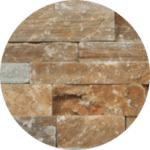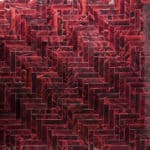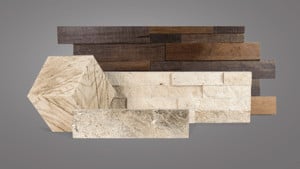Unraveling the Secrets: Faux Stone Veneer vs. Natural Stone Veneer
Author: Kerry Dillon
Welcome to the enchanting realm of stone veneers! It’s here where the art of aesthetics and the charm of functionality merge to redefine home design. Whether it’s an alluring stone fireplace, an exquisite accent wall, or a rustic stone cladding that you envision, deciding between a faux stone veneer and natural stone veneer can often seem like a conundrum. But fear not! We’re here to uncover the secrets and help you make an informed choice.
An Insight into the World of Stone Veneer
Stone veneer, in essence, is a thin, decorative layer of stone, or a stone-like material. A fundamental element in construction, stone veneer is often the choice for exterior faux stone panels 4×8, interior stone walls, or surfaces, adding an appealing aesthetic of solid stone construction without the weight, cost, and labor associated with full stone blocks.
Decoding Natural Stone Veneer
Natural stone veneer, crafted by Mother Nature herself, is a thin layer of real stone, quarried and cut from solid blocks. Each piece, with its unique texture, color, and pattern, becomes a testament to the artistry of nature. The natural stone veneer forms an enduring centerpiece of attraction due to its unique blend of color and texture, offering an enduring aesthetic appeal that can transform any fireplace stones or ledge stone fireplace.
Understanding Faux Stone Veneer
Faux stone veneer, also known as manufactured stone or stone veneer siding, is an innovative man-made product designed to emulate the look of natural stone. It’s created by using advanced manufacturing techniques where a lightweight concrete mixture is poured into stone molds. This is then painted to resemble the colors and patterns of real stone, resulting in a versatile range of faux stone panels for walls, faux stone electric fireplaces, or faux stone mobile home skirting.
Faux stone veneer offers versatility in colors, shapes, and textures. And it may Weigh less than its natural counterpart,
It brings about ease of installation and cost efficiency, making it a common choice for projects like faux stone fireplaces and faux stone wall panels interior.

Faux Stone vs. Natural Stone: The Crucial Differences
Aesthetic Appeal
Natural stone veneer carries an authenticity that’s hard to replicate. However, modern manufacturing processes have allowed faux stone veneer to mimic natural stone’s look quite convincingly, resulting in highly realistic faux fireplace stone and exterior faux stone panels 4×8.
Budget Considerations
When it comes to cost, faux stone veneer often has a lower upfront price compared to natural stone veneer. This cost-effectiveness extends to both the material itself and the installation process.
Ease of Installation
Thanks to its lightweight nature, faux stone veneer often offers easier and faster installation. It can be applied to most surfaces without additional foundational support, making it ideal for DIY projects like faux stone wall panels and faux stone skirting.
Durability and Longevity
While natural stone veneer is often viewed as more durable and long-lasting, high-quality faux stone veneers, such as those used in faux stone panels 4×8, also offer a considerable lifespan.
Choosing the Perfect Stone for Your Fireplace and Accent Wall Project
Your decision between faux stone veneer and natural stone veneer will ultimately depend on your project requirements, budget, and personal preferences. Consider whether the rustic charm of a natural stone veneer fireplace or the cost-effectiveness and versatility of a faux stone wall panel suits your needs better.
Wrapping Up
Regardless of whether you opt for the authentic allure of natural stone veneer or the budget-friendly and versatile faux stone veneer, your decision will undoubtedly add a touch of charm and durability to your project.
Frequently Asked Questions (FAQs)
- Is stone veneer expensive? The cost of installation includes the cost of the material, for example, stone veneer panels, and the cost of installation. The cost of installation includes all materials plus time to install. Many DIYer’s do not include their time cost, but professional installers do include the cost of installation time. The cost of stone veneer varies depending on the type and quality of the product. Generally, natural stone veneer tends to be more expensive than manufactured (faux stone) options, but both can be affordable depending on the brand and style.
- Can stone veneer be installed over existing surfaces? Yes, stone veneer can often be installed over existing surfaces. However, it’s essential to ensure that the surface is clean, dry, and structurally sound before installation. It is always necessary to follow your local building codes.
- How do I maintain my stone veneer? Stone veneer is relatively low maintenance. Regular dusting and occasional gentle cleaning with a mild detergent and water should keep your stone veneer looking its best.
- Is stone veneer suitable for outdoor use? While this article focuses on interior applications, many stone veneer products are also suitable for outdoor use. Be sure to choose a product specifically designed for exterior applications and follow the manufacturer’s installation guidelines.
- How long does it take to install stone veneer? The installation time for stone veneer can vary depending on the size of the project, the type of veneer, and your skill level. For DIY installations, expect to spend a weekend or more on the project, while professional installations can typically be completed more quickly. Please see two YouTube videos for guidance. Remember to always follow local building codes. https://www.youtube.com/watch?v=GgIS-NwRrOU&t=133s, https://www.youtube.com/watch?v=4Q2Awsjumm0&t=103s
- How many square feet of the product do I need? Many companies offer online product calculators to assist you with your computations.
About the Author:
Kerry Dillon is a dedicated design expert. She loves balancing design with colors and textures. She also understands the practical use of design no matter what the location! She is based in Metro Detroit.













